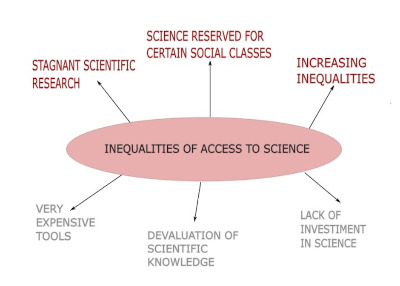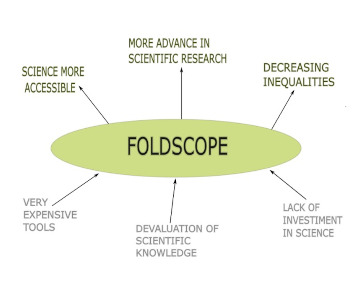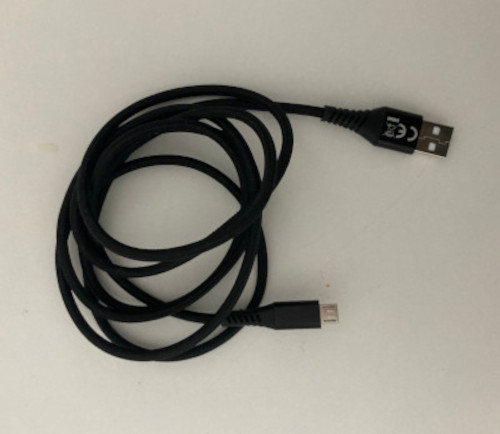5. Group Dynamics & Final Project#
This module was divided into three specific parts.
5.1. Project Analysis and Design - 23/09/2024#
At the beginning of the course, we were asked to select a problem that plays a role in our society and design a problem and solution tree. We saw a video in class to better understand how to design it. Then, we had to choose a problem from the fablab projects and frugal science projects. I chose the open-source Foldscope and here are my problem and solution tree that I made with Inskape.


Microscopes are very expensive equipments, so we, as students, only have the opportunity to work with them at school. However, not every school has this kind of equipments. This increases learning inequalities because only students from certain schools can use microscopes. Foldscope began as an idea to make science more acessible. Foldscope is a paper microscope that combines low-cost material with precision optics. This innovation resulted in microscopes that are both high-quality and affordable.
5.2 Group formation and brainstorming on project problems - 21/10/2024#
For this class, we have to bring an object that represented a theme or a social issue we care about. This was a bit difficult for me, because I didn’t have any idea what object to bring. To get some inspiration I read this page about the United Nations’ Sustainable Development Goals.

After we presented our objects, we had to form groups based on the objects each person brought. I felt there wasn’t a group of people addressing the exact same issue I had in my mind with the phone charger. However, two classmates, Noah and Jonas, brought objects related to school with a focus on education inequalities. One of the issues I had defined for this class was inequality, so I thought their ideas aligned well with mine.
Afterwards, together with Noah and Jonas, we created a list of potential problems related to the topic of inequalities in schools. Once the list was complete, we rated each problem from one to four to determine the best one.
| Problem | Matilde | Jonas | Noah |
|---|---|---|---|
| Inequalities of success for homeworks | 4 | 4 | 4 |
| Common homework for different abilities | 4 | 3 | 3 |
| Education level differences accross the world | 3 | 4 | 4 |
| Education system evaluates children/student depending on their social background | 4 | 4 | 4 |
| Medical research inequalities around the world | 3 | 2 | 3 |
| Better Education -> Better research -> Better society | 4 | 4 | 3 |
At first, I was nervous because I had never talked to Robin, Jonas and Noah. In the beginning, I felt shy and didn’t share my opinion very often. However, as the days passed, I became more and more confident about expressing my ideas and opinion. The guys were very nice and kind, which made every step of the process easier and more enjoyable.
5.3 Group dynamics - 4/11/2024#
In this class, I learned how to use tools to work more effectively in group. For example, I learned how to structure meetings, define and assign roles, use decision-making techniques, communicate effectively, ensure everyone has a voice, and provide constructive feedback.
The three tools for group dynamics that I learned were:
-
Fingers rate: I had never used this type of tool until in this class. I think it is a very useful way to express ourselfs without words. Moreover, it can be applied in different contexts, not just university meetings. It is specially helpful when we don’t want to spend too much time making a decision or when we are in the early stages of a project and don’t have many arguments to discuss.
-
Explain how we feel about the work at the begginning and at the end of each meeting: This tool helps us see more clearly which stage we are at and where we want to go as a group.
-
Distribute tasks: Assigning tasks is crucial for achieving efficiency, collaboration, and success in any team or organization.